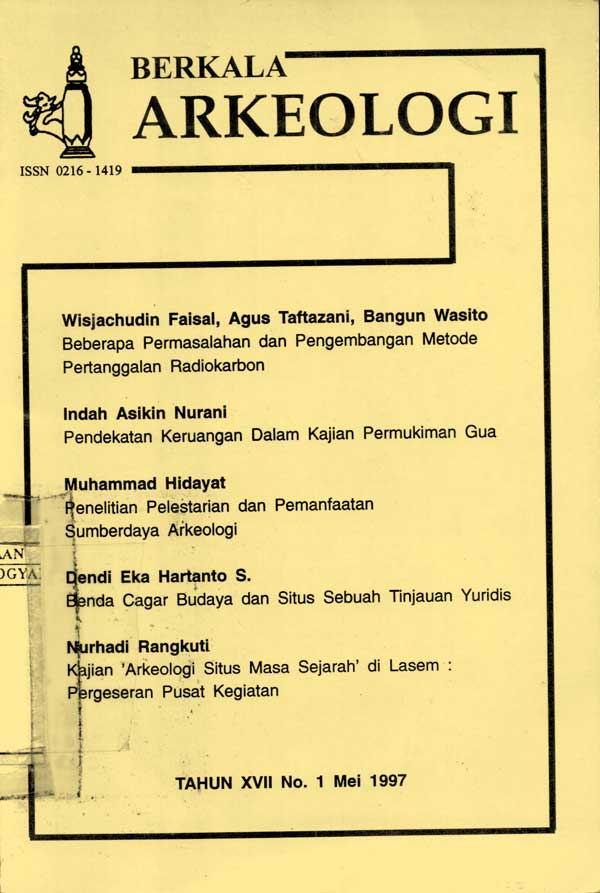PENDEKATAN KERUANGAN DALAM KAJIAN PERMUKIMAN GUA
Main Article Content
Abstract
As is well known, a cave area is limited, so it is interesting to study more deeply. It is hoped that the limited cave area can be used as a benchmark as a starting point in the study of settlement patterns with an approach through spatial archaeology. So far, research on cave settlement patterns has been carried out in the stage of determining the type of activity of the cave dwellers, which is focused on certain units of analysis such as artifacts and ecofacts contained in the cave. Meanwhile, research on the reconstruction of patterns and ways of life as well as the use of the available cave land has never been carried out. The patterns and models that were carried out and which were known to mankind at that time are interesting to be researched.
Article Details

This work is licensed under a Creative Commons Attribution-NonCommercial-ShareAlike 4.0 International License.
References
Chang, K.C., 1968. Settlement in Archaeology, Module in Anthropology, National Press Books, Palo Alto, California.
Clarke. David L.. 1977, Spatial Information in Archaeology, in Spatial Archaeology, London: Academic Press, page 1 - 32.
Mundarjito, 1990, Metode Penelitian Permulciman Arkeologi, Monumen Lembaran Sastra Seri Penerbitan Ilmiah No. 11 Edisi Khusus, Depok : Fakultas Sastra UI, hlm. 19 – 31
Philip Barker, 1982. Techniques of Archaeological Excavation, BT. Bastford Ltd. London.
Sharer. Robert J. 1980. Fundamentals of Archaeology, The Benjamin/ Cummings Publishing Company, Inc.
Subroto, Ph., 1983, Studi Tentang Pola Pemulciman Arkeo/ogi : Kemungkinan Penerapannya di Indonesia, PIA Ill, Jakarta : Proyek Penelitian dan Penggalian Purbakala, hlm. 1117 - 1186.

